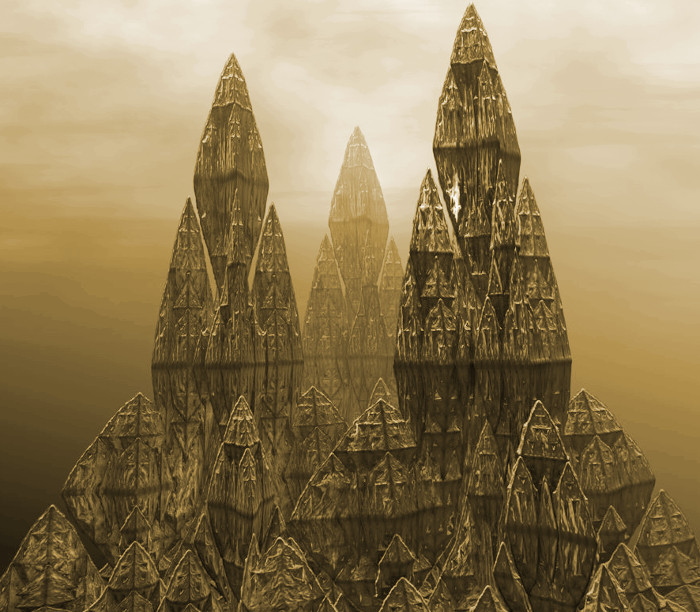The First Age of Darkness came to an end with the rise of the Empire of Keshim.
Age of Keshim
Prior to the rise Keshim, the continent of Celaphania was a loose collection of warring city states, tribal villages, and chaotic warholds. Little is known of this early history, save for what has been preserved in Eldren records. Around -3,600 CA (before the Common Age), an alliances of city states led to the formation of the kingdom of Tulgesin around the coast of the Tulsan Sea. The kingdom of Tulgesin eventually collapsed and reformed under a succession of kings, finally uniting and solidifying under the fanatically religious King Taberesh of Glavern. By -3000 CA, the kingdom was known as Keshim, named after a famed religious prophet of the time.

The growth of Keshim was gradual, building momentum over the centuries. Like all empires, Keshim saw both times of great prosperity and growth and years of famine and drought. Keshim reached its golden age around -2700 CA.
Around the year -2300 CA, the demon Maldracon, who had escaped imprisonment on Atracus, loosed his fury upon the world from his hidden fortress in the cavernous abyss of Elderdeep. The Empire of Keshim threw its armies against the Demon Lord and his Fellspawn hordes, ending in a climactic battle lead by the hero Thulmer Galsungir, wielder of the legendary sword Dawnbringer. Although Thulmer perished in the battle, Maldracon was defeated.
The great war against Maldracon decimated Keshim, and drained the empire of its wealth and resources. Sensing the kingdom’s weakness, barbarians on all fronts pushed in with ever-greater tenacity. Vast areas of the kingdom were lost to the warring tribes, and the great cities of Keshim soon became embroiled in rebellion.
So fell the empire of Keshim.
Second Age of Darkness
Nearly two-thirds of the population of Celaphania, some thirty million in all, died in the first century of the Second Age of Darkness as a result of devastating wars, rampant disease, and widespread famine. As trade across the Medrean Sea ground to a stop, once-bustling cities crumbled into desolate ruins. The only real stability in the region came from guarded settlements located around the surviving monasteries and temples of the Archidoxy that had, until this age of darkness, operated in relative seclusion.
In -1774 CA, King Kalbrien of Lanvaria assembled the other regional kings and declared himself High King of Celaphania. He was succeeded by his son, the brutal tyrant Korveldred. King Celysses of Glavern (now called Falmore-Glave) was appointed by the Archidoxy to lead the secession against King Korveldred in what is now called the Medrean Secession Wars. King Celysses was later succeeded by King Elinciadas, who continued the war against Lanvaria.
Rise and Fall of Elinica
The victory of King Elinciadas over the kingdom of Lanvaria at the end of the Third Medrean Secession War solidified the alliance of Medrean States. Over the next 200 years, the Medrean States would continue to expand their territory, power, and wealth. By -1450 CA, the empire came to be called Elinica in honor of its founder, King Elinciadas.
Beginning around -1040 CA, Elinica entered a great revival that heralded the dawn of new golden age. Elinica spanned two continents, stretching from the great Barrier Mountains across the Medrean Sea and out through every land of Celaphania. The empire had conquered the far eastern shores of Olarria and the expansive coast of the Medrean. With a well-trained professional army, the emperors of Elinica held their vast dominion together with an iron fist.
During this self-titled golden age, extraordinary discoveries in science, magic, and alchemy ushered in a period of progress that would be rivaled only by the later developments of Marada. But within 100 years, Elinica began to decline. The emperors had become decadent, but powerless figureheads, serving as little more than puppets for a corrupt Senate of an empire that fancied itself a free republic.
But all of that was about to change.
Continue to “The Age of Marada”
